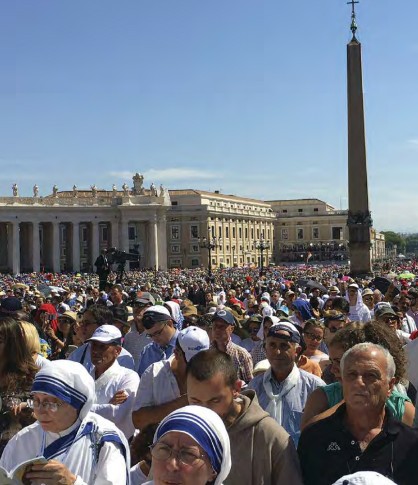Encounters with a saint
I was skeptical about sainthood. Then I met three people whose lives were changed by Mother Teresa.

In September 100,000 people crowded into St. Peter’s Square to hear the bells of the cathedral ring out in celebration of the newly sainted Mother Teresa. Many had arrived the night before and had waited behind barricades until the square opened at 7:30 a.m. Three hours and 15 minutes later, Pope Francis officially declared Mother Teresa a saint.
I sat in the front row of the audience with Gary Morsch, founder and chairman of Heart to Heart International, a medical relief NGO; David Bronczek, president of FedEx; and Helen Barr, a handbag and footwear designer from Manhattan. All three felt that their lives had been changed by their encounters with Mother Teresa.
As for me, I felt the irony of being present at her canonization. I have long questioned the very idea of sainthood, but now I was with thousands of true believers. I was the only one in my row who had never met Mother Teresa.




